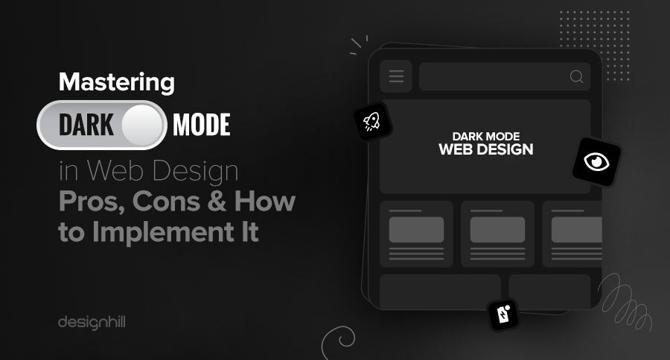Designhill
1d
61

Image Credit: Designhill
Mastering Dark Mode in Web Design: Pros, Cons & How to Implement It
- Dark mode, also known as night mode, involves setting a website’s background to a dark color with light-colored text and elements, providing a unique look and reducing eye strain.
- Advantages of dark mode include reduced eye fatigue, enhanced user engagement, energy saving with OLED screens, and a modern aesthetic appeal.
- However, dark mode may lead to design inconsistencies, may not be optimal for users with vision impairments, and can pose readability challenges in low-light environments.
- To implement dark mode effectively, websites should allow switching to light mode, address readability issues by following WCAG 2.0 guidelines, maintain design consistency, and ensure visually appealing images.
- Designers should test dark mode on various devices and browsers before launching to ensure compatibility and performance.
- User experience should be a key factor in judging the success of implementing dark mode in website design.
- Consider the services of talented website designers from platforms like Designhill to overcome dark mode design challenges.
- Dark mode is popular among users for its benefits but designers must also be aware of its limitations and take necessary steps to address them.
Read Full Article
3 Likes
For uninterrupted reading, download the app